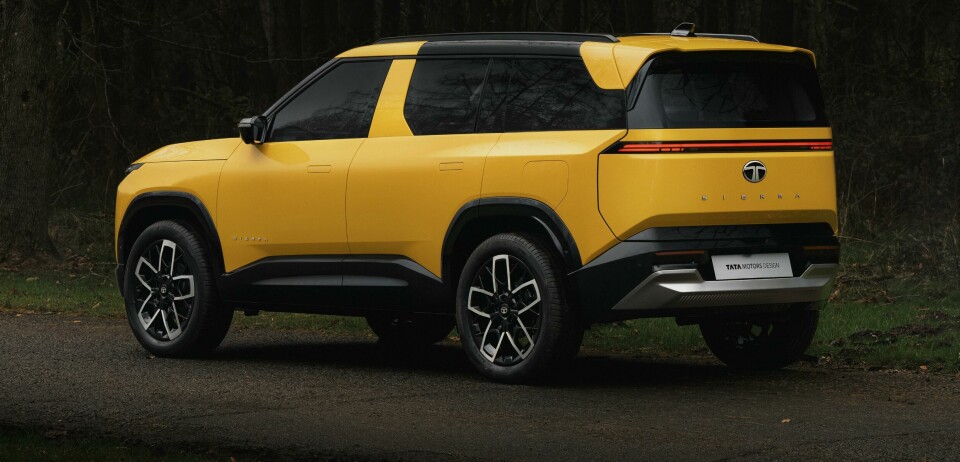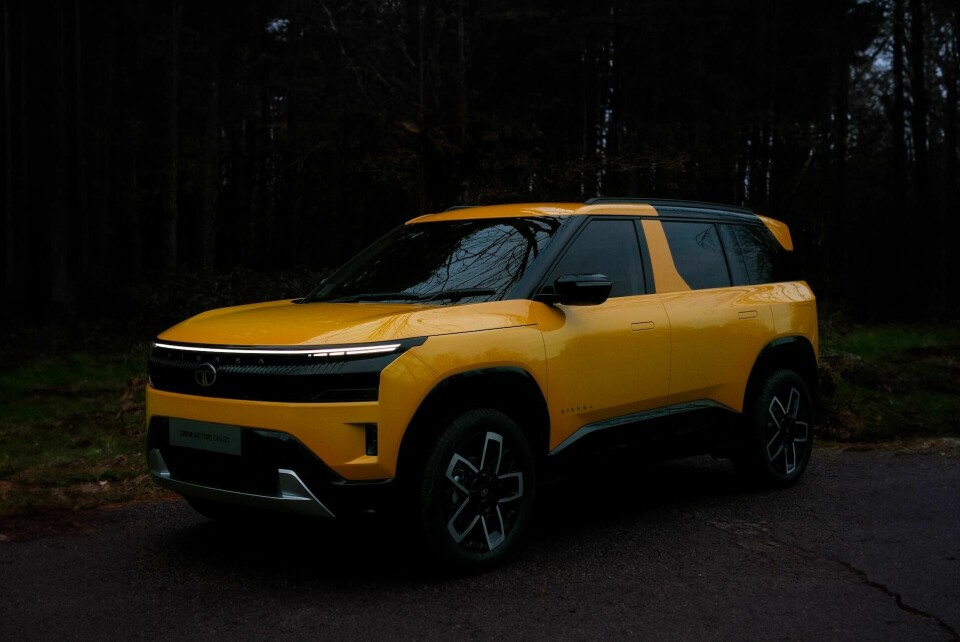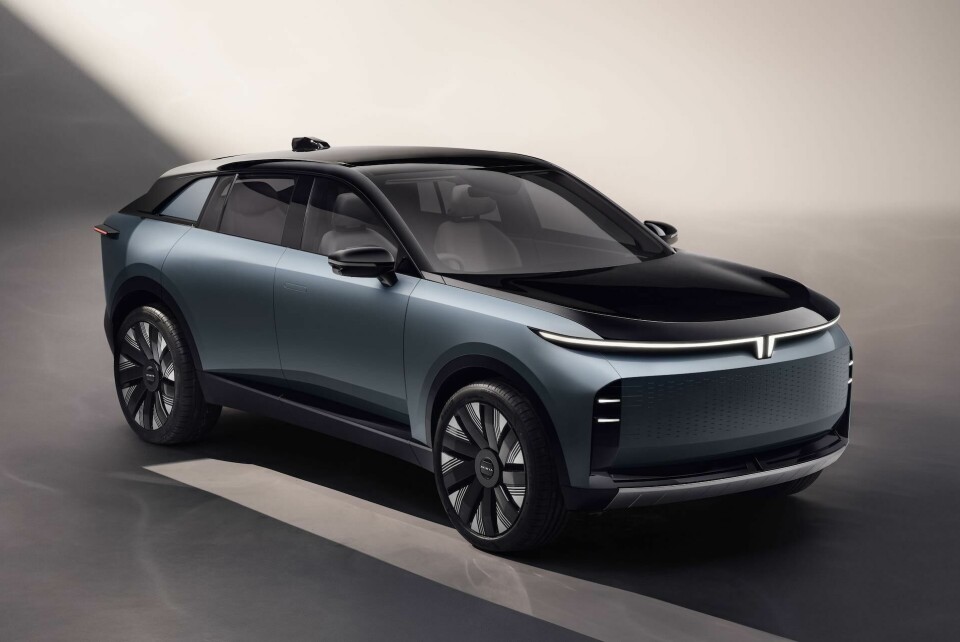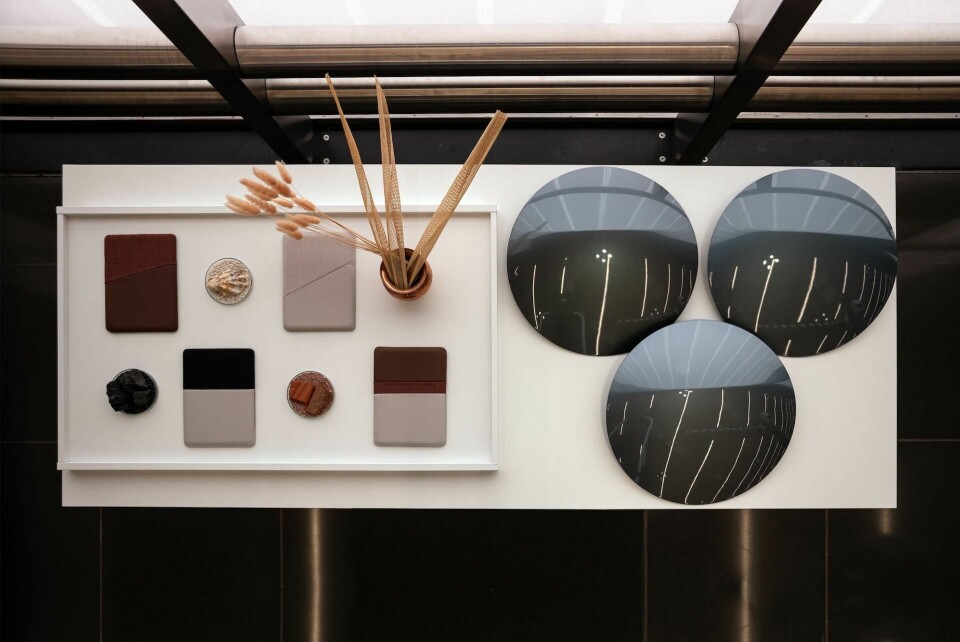
Tata reimagines iconic Sierra, reveals new Avinya brand
The SUV enamoured by Gen X has been reborn, this time looking to connect with the next generation of younger drivers. Alongside it sits a new sub-brand, dubbed Avinya, bringing an entirely new level of luxury into the Tata fold. CDN visited the UK studio to learn more, with global and European design bosses Martin Uhlarik and Aurelien Doisy on hand to show us around
The Sierra is an important model for Tata and in particular for drivers in the brand’s home market of India, where it first launched in 1991 as a quirky mid-size SUV.
It joined the likes of the Suzuki Samurai, Mitsubishi Pajero and Daihatsu Fourtrak as a compact off-roader, capable of hauling the kids to school and then driving home through the woods. At the time, a distinctive rear window that wrapped upwards into the roof helped to set it apart from the pack. Boxy and square-jawed up front, it was very much of the era.
Now, there is a new model due to launch very soon. It too is also reflective of the status quo with slightly softer lines and rounded edges – a result of stricter aerodynamics and pedestrian impact requirements. That is not to say it has followed the crowd with a homogenous crossover form. No, that rear window is as quirky as ever, now an optical illusion created by black contrast cladding on the roof and a body-coloured boot spoiler that appears to float in mid air. Black A-pillars create a similar effect at the front, as if the roof has been bracketed on at the B-pillar.
On our visit to the studio, Uhlarik notes that the new Sierra was informally codenamed Project XYZ for how it speaks to multiple generations: the Gen Xers who might have owned one, or knew someone who did, in the past; and Gen Y and Z who are being passed the baton. “To have a cross generational appeal was always the remit of the project,” says Uhlarik.

Very much an SUV, the new Sierra hides its bulk well with more contrasting sections around the side sills, wheel arches and lower masks (front and rear) which make it appear muscular and less tall. We are pleased to say it has held true to the concept we saw early in 2023.
Bold “SIERRA” branding pairs with a wide, thin light bar at the front (mirrored at the back) which marks the most significant visual evolution over the original model. It would have been very easy to carry over a pair of square headlamps to tie the two models together, but the rear window and roof does more than enough to link past and present. Early sketches illustrate this well.
It is not entirely sleek and sculpted in a wind tunnel. The front end is still bolt upright, softened slightly by another optical illusion – the body-coloured section of the front bumper cuts back towards the front wheels, while the contrast section continues straight down – and the rear has almost a sheer drop from the boot spoiler to the diffuser below.
Again, the bodywork cuts back towards the rear wheel, while the contrast bumper section juts out and ever-so-slightly upwards. Both of these elements are only really visible given the yellow and black colour combination. The approach is far less obvious from the full-size clay buck that was created during the model’s development.
We suspect there may be parallels made with the Rivian R1S, perhaps also the Fisker Ocean to some degree. Any similarities found when looking at pictures side-by-side on a computer screen do not come across when viewed in the metal. The Sierra was delivered by the team in Pune, India, led by crowd favourite Ajay Jain who was given the keys to the studio in May 2023.

If the Sierra is utilitarian with a dash of premium, the new Avinya X is the opposite. Its shape and proportions suggest all-road capability, while the fastback silhouette and ultra-plush interior scream long distance cruising in the lap of luxury. Some sub-brands feel superfluous – this feels necessary.
There are familiar traits seen on the Sierra, most notably the thin lightbars and treatment of the rear bumper, but the overall execution of the Avinya X is quite different. Indeed, there is definitely the Tata Motors DNA but a fidelity and quality that is more consistent with what one could expect from JLR. The Avinya X follows the Tata Avinya concept we saw earlier in 2022, and like that concept, the X is still in pre-production guise.
With two models now sporting the Avinya name, we can start to see how this family of products will take shape. The wide T-for-Tata light signature is similar to the sedan concept but a little cleaner now with less obvious headlamps at each corner. Both have a super-long wheelbase and the approach to CMF is consistent, particularly the contrast surfacing and colour themes. Cool metallics pair well with warmer earthy hues inside, inspired by Indian landscapes.

The X is technically a fastback SUV but the boat-tail rear and sloping roofline betray its intentions – this is clearly a car designed with status as first priority. Like the earlier concept, the catamaran theme remained a key source of inspiration.
“We really wanted to keep those nautical elements and have that as a DNA, but at the same time push forward and test the water on so many more levels [with the X],” says Doisy. “The inspiration really came from the kind of sailboat you see at the America’s Cup, a super strong high-tech yacht,” adds Uhlarik.
Doisy emphasises that there was a conscious effort to avoid “being too car-like” with the X, “while also bringing in some product design influences in terms of its modernity.” The nautical theme is more than just a marketing theme evocative of pleasure cruises out in the open water (or road). When sketching, the team actively studied boat fuselage and water lines to see how that might translate into the car body’s highlights and shadows. This is particularly obvious under natural light, with the gradient of light to dark creating a wave form across the side.
“The car is really about elongated, fluid lines,” says Doisy, “really elegant with a hint of a coupe silhouette.”
The rear is particularly striking when viewed side on, the back window jutting out from under the boot spoiler like the deck of a luxury yacht. In contrast to the softness of the bodyside it feels almost brutalist and imposing. “We really wanted to get that presence,” explains Doisy. “It should feel like a strong vehicle. Powerful, premium, but elegant at the same time.”
What then of the interior, which in this segment is as important if not more so than the impression made by its exterior. If the outside is about modernity, technology and nautical themes, the interior centres firmly on wellness. “You close the door and you’re in your own little bubble,” as head of interior design Sandy Boyes puts it, likening it to stepping away from the hustle and bustle of the city street and into a calm, premium hotel spa. Part of this also came down to assessing the Tata Group as a whole – the Taj Hotels chain, the Air India airline – and trying to link those together.
“We felt that when you step from one product to the other, it should all flow. If you’re chauffeured from the hotel to the airport, the smells, the quality of the materials, the craftsmanship, the well being, you should recognize it. It should be a seamless transition so you get the feel of Avinya as a brand and not just the product,” Boyes elaborates. “That subliminal message should be coming through all the time. It’s all about mental health, well being and a stress free environment – a place to relax.”
The cabin feels light and uncluttered with clean surfaces, accented only by soft ambient lighting that emanates from the front of the door card. The light signature at the front of the car is repeated on the top of the dash, styled to look like a discrete sound bar you might find in a fancy living room. A relatively restrained touchscreen by modern standards adorns the centre of the instrument panel, a little lower and less in view than many others on the market, with an even thinner digital display for the instrument cluster. Most of the buttons in immediate view are located on the steering wheel.
There is a clear split between the front and rear rows, both in a symbolic sense and in the fact that they are literally different colours and separated by a 45-degree slash from the window shade down to the floor. Both rows get an oblong-shaped arm rest while a fold out footrest can be utilised for longer journeys. Eagle-eyed viewers will notice the fabric pull handle at the back of the main centre console, which pulls out an extra coffee table-style tray.
While this is a story of two cars, it is ultimately a story of two brands. The addition of Avinya brings a new strain of luxury to a portfolio that is more usually associated with ruggedness and value for money. It is an exciting move for Tata Motors. Uhlarik does stress however that, while it is a separate nameplate, “it’s still closely associated as part of the group.”





























































